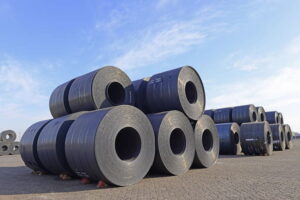Once steel prices retreat from their current upward trend, the drop for flat products in Europe could amount to between €150 and €270/tonne ($180-323), potentially even €300, according to a German steel consultant.
The steeper drop would bring coil prices back in line to a more realistic spread between raw materials costs and sale prices, as it has been on average over a long-term observation. However, such a drop is unlikely, and the correction should be closer to the lower value, says Andreas Schneider of Stahlmarkt Consult. He believes in any case that prices will keep inching up for a while longer, and not come down before the second half of 2021, he said at the “Digibrunch” webinar organised by e-commerce platform Xom.
Iron ore prices saw a huge surge until the end of last year and have not moved much since, while steel product prices have continued their rigorous surge, decoupled from raw materials prices.
Schneider also observes that order intake at mills peaked in the fourth quarter of 2020, but since then there has been no further leap or boom. “This tells us that there are shortages on the supply side, and that prices are overheated,” Kallanish heard him say at the webinar on Thursday.
For long products, the drop potential is smaller, at between €50 and €100/t, and mostly linked to scrap prices, “and the problem here is that scrap prices themselves are hard to grasp”, Schneider commented. He believes that over the following years scrap prices will gain strength in principle. As main reasons he cites the trend for decarbonisation and EAF-based steelmaking, as well as scrap resource nationalism. In the near term though, Schneider expects further oscillation of scrap prices this year.
Christian Koehl Germany






